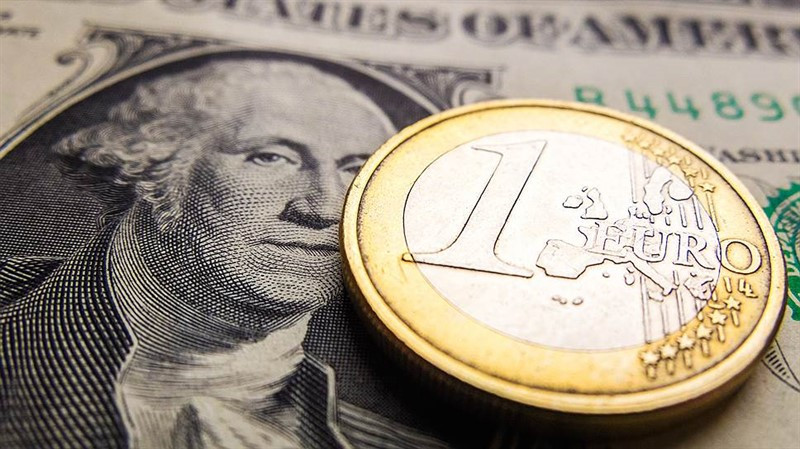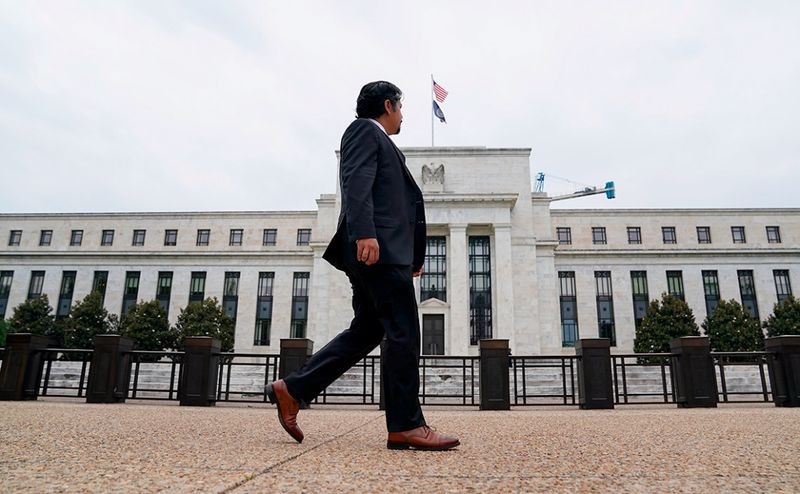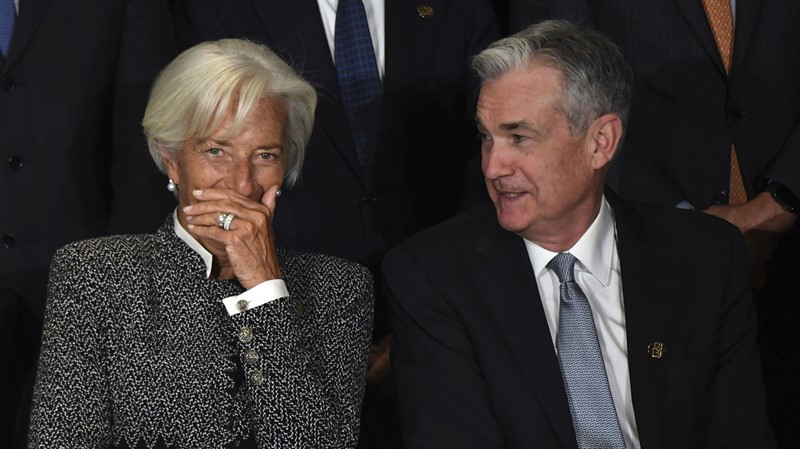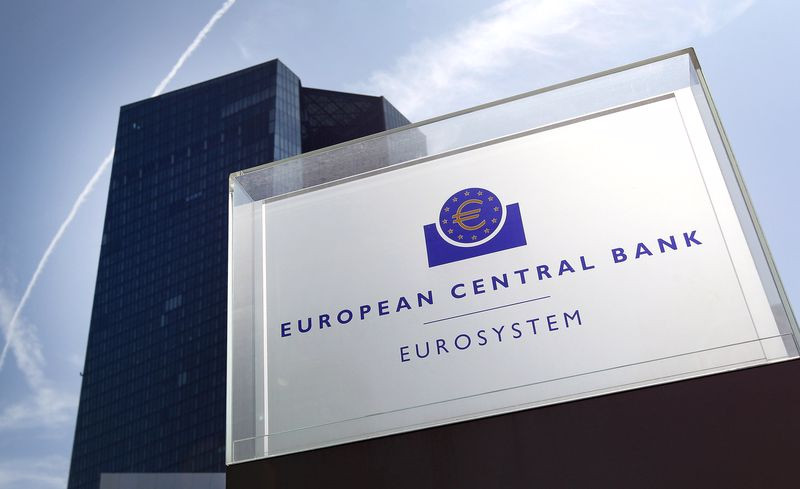
The inflation that has raged on both sides of the Atlantic is not only hitting consumers' pockets, but also keeping central bankers awake, who are beginning to abandon the emergency measures they have introduced in response to the pandemic.
Behind this shift are concerns that inflation will not subside soon amid ongoing supply chain tensions, rising commodity prices, and labor shortages.
The task of politicians is complicated by the fact that economic growth may slow down, which prompts some experts to warn about stagflation.
Following the results of the January FOMC meeting, Federal Reserve Chairman Jerome Powell signaled that the central bank has no choice but to take an aggressive path of tightening the monetary rate.
"Apparently, panic has begun in the ranks of the Fed. Now the task of the central bank is to suppress inflation, not allowing the flame in the economy as a whole to go out. At the same time, the central bank does not seem to have any roadmap to do this after a sharp increase in inflation," Grant Thornton analysts said.
The fact that the US central bank does not have a definite long-term strategy is indicated by the fact that over the past six months the alignment of opinions within the Fed has begun to change dramatically in response to rising inflation.
Last summer, FOMC members agreed that there would be no interest rate hike in 2022, and there would be only one increase at the end of 2023. Now they expect at least three rate hikes this year and are in favor of starting to raise rates in March.
Although the rapid rise in prices in the United States requires drastic measures, the Fed is forced to balance, choosing between inflation and recession.

Bank of America strategists believe that after a series of increases in the key interest rate, the central bank will have to return to stimulating the economy in 2023. According to them, this is the only chance to avoid a collapse for the economy, where financial assets are 6.3 times the volume of national GDP.
At the moment, an interest rate increase at the Fed meeting on March 15-16 is almost guaranteed. But even the size of this increase is hanging in the air, as some analysts expect that the central bank, instead of the usual rate increase by a quarter of a percentage point, will choose a more significant increase by half a percent in order to tighten policy faster and demonstrate the seriousness of intentions in reducing inflation.
However, much depends on how the economy, inflation, financial markets and the coronavirus behave in the coming weeks.
Americans' consumer sentiment continued to decline in early 2022, reaching its lowest level in a decade, according to the latest data from the University of Michigan, whose experts warn that the combination of Omicron, high inflation and a constant stream of news about future Fed rate hikes could cause a negative reaction from consumers.
"The main danger is that consumers may overreact even to these tiny tremors," they said.
The ISM manufacturing index, an important indicator of America's business cycle, noted a significant slowdown in January. The indicator fell to 57.6 points from December's 58.7 points.
The release from the ISM may be the first alarm bell for the Fed that the process of suppressing inflation will first suppress the economy.
However, the central bank may be drawing a fine line between what is necessary to lower prices and what would be excessive.
Now the US central bank has to respond to a surge in inflation, which is mainly caused by a shortage of supply.
Unable to increase supply, all bankers have to do is stifle demand.

The Fed's main task, most likely, is not to bring inflation back below 2%, but so that it does not grow too much.
After all, now inflation below the 2% target carries much more risks than exceeding it. For the same reason, the central bank was in no hurry to raise the rate. Obviously, a mistake with its sharp increase can be costly.
According to the FOMC's December forecasts, core inflation in the US will fall to 2.7% this year and to 2.3% in 2023. At the same time, the federal funds rate will be from 0.6 to 0.9% this year and from 1.4 to 1.9% next year.
It should be noted that these forecasts are lower than the Fed's estimate of a neutral interest rate, which is 2.5%. Moreover, the assumed real interest rates are also negative.
With the record level of the US national debt of $30 trillion and its stable excess of 100% of GDP since 2012, it is difficult for the central bank to talk about positive real interest rates, but you can only think about reducing their "negativity".
Even a real rate of 4% will mean that the entire budget deficit in the post-crisis period will go to debt servicing and thus start a debt spiral.
Therefore, the Fed may immediately stop a sharp rate hike as soon as it sees a significant decrease in inflation.
Despite the seemingly hawkish position of the US central bank, the head of the Federal Reserve Bank of Minneapolis, Neil Kashkari, recently stated that the central bank's goal is not to limit the economic recovery, but to take his foot off the accelerator a little.
"We will need to think very carefully about how things are going, how the economy is responding to our first steps. We are not set on any particular trajectory. The data will tell us what's going on," said Atlanta Fed President Rafael Bostic.
At the moment, the scenario of five hikes in the federal funds rate with the usual quarter-point increment is not excluded. However, the first aggressive round with a half-point increase will show that the Fed is serious, and may prevent more active actions in the future.

"Markets are starting to wonder not only when central banks are going to raise rates, but more importantly, how fast and how high they will rise. However, now this is not only the history of the Fed, but also the history of the ECB," National Bank of Australia analysts said.
One of the softest central banks in the world has finally acknowledged the growing inflation risks and even opened the door for an interest rate hike this year.
In January, inflation in the eurozone reached a record high of 5.1%, which significantly exceeded the European Central Bank's own forecasts. ECB President Christine Lagarde admitted that this figure, due to the increase in energy and food prices, caught even the central bank by surprise.
"The situation has really changed. Compared to our expectations in December, the risks for the inflation forecast are shifted upward, especially in the near future," Lagarde said on the eve of the ECB's January meeting.
At the same time, she refused to repeat previous recommendations that an interest rate increase this year is extremely unlikely.
The reaction of investors was violent, and the market movements were unusually significant.
Now the market is counting on a rate increase in the eurozone by as much as 50 basis points by December.
On Thursday, the USD index sank by almost 0.7%, reaching a three-week low around 95.27, and EUR/USD rose by more than 100 points, from 1.1305 to 1.1435.
"The ECB has changed its statements of intent, and now the markets are actively speculating that the central bank will begin tightening in 2022. Against this background, the EUR/USD pair may settle in a new range of 1.1300-1.1500, in which it will consolidate in anticipation of the next crucial ECB meeting scheduled for March 10," ING analysts said.
According to Lagarde, the ECB's next steps will depend on the data, and it will not rush to make any decisions.
Although inflation in the region of 5% was an unpleasant surprise for the ECB, inflationary pressure caused by a jump in fuel prices, as well as problems in supply chains, will weaken, the central bank management believes.
"Inflation is likely to remain high for longer than expected, but it will decrease during this year," Lagarde said.
According to the ECB's December estimates, inflation in the eurozone in 2022 will be 3.2%, and in 2023 it will drop to 1.8%.

Against the background of its global counterparts, the ECB stands out noticeably. It continues to provide abundant monetary stimulus after missing the inflation target for most of the last decade.
The ECB still believes that current inflation is a temporary phenomenon and highlights various economic trends in the euro area. It is also aware of the dependence of part of the corporate sector on cheap financing, so at least some "reasonable" inflation is needed, because debts are simply better repaid in "cheap" money.
Yesterday, Lagarde said that the ECB's March meeting will be crucial, since new economic forecasts can serve as a justification for any political step.
The market considered that the head of the ECB left the door open for a change in the central bank's guidance on rates in March.
While many economists are changing their forecasts after Lagarde's speech, some still believe that the ECB will act gradually.
Strategists at Goldman Sachs and Deutsche Bank now predict a quarter-point increase in the deposit rate in September and December, as a result of which it will be reset for the first time since 2014.
Berenberg expects the first rate hike only in March 2023.
ABN Amro analysts do not see any changes in rates during the ECB's forecast horizon, which currently extends until the end of 2024.
"Although the chances of a rate hike this year have clearly increased significantly, we are not changing our baseline scenario yet. It is difficult for us to see the feasibility of raising interest rates in the face of a supply-side shock when we see few signs of secondary effects," they said.
On Friday, the EUR/USD pair tried to extend yesterday's rebound, but encountered resistance at 1.1480.
The upward momentum weakened somewhat after the release of statistics on the US labor market for January.
Last month, 467,000 jobs were created in the US economy, which was higher than the forecast of 150,000. The December value of the indicator was revised from 199,000 to 510,000.
The data on the strong growth in the number of employed reinforces investors' confidence that the Fed will raise the rate in March, and this has a beneficial effect on the dollar.
Nevertheless, the euro is close to showing the best weekly increase against the greenback since March 2020 – by 2.5%.
"Closing the week above the key resistance at 1.1483-1.1495 (January and March 2020 highs) will signal the formation of the EUR/USD base and will cause a more stable growth. The next resistance is located at 1.1513-1.1524 and 1.1558 (38.2% correction of the bearish course of 2021-2022). The 1.1558 mark should limit growth, and its breakdown will cause testing of 1.1678 (200-day moving average)," Credit Suisse analysts said.
"The pair will remain bullish as long as it trades above 1.1414. Below the support is at 1.1376-1.1371, then at 1.331, but only a breakdown of 1.1268-1.1266 will strengthen the bearish risks," they added.
 English
English 
 Русский
Русский Bahasa Indonesia
Bahasa Indonesia Bahasa Malay
Bahasa Malay ไทย
ไทย Español
Español Deutsch
Deutsch Български
Български Français
Français Tiếng Việt
Tiếng Việt 中文
中文 বাংলা
বাংলা हिन्दी
हिन्दी Čeština
Čeština Українська
Українська Română
Română

